
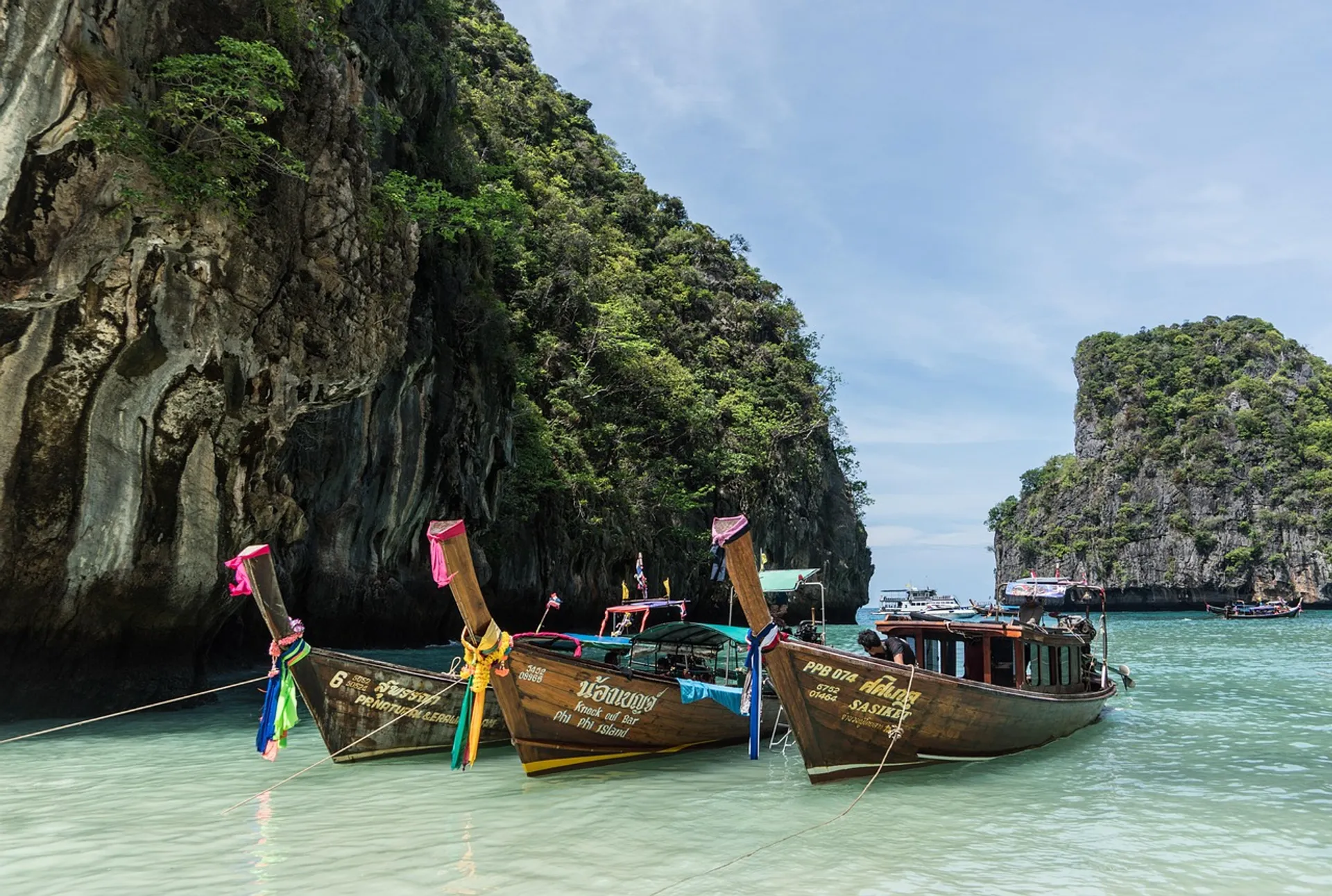
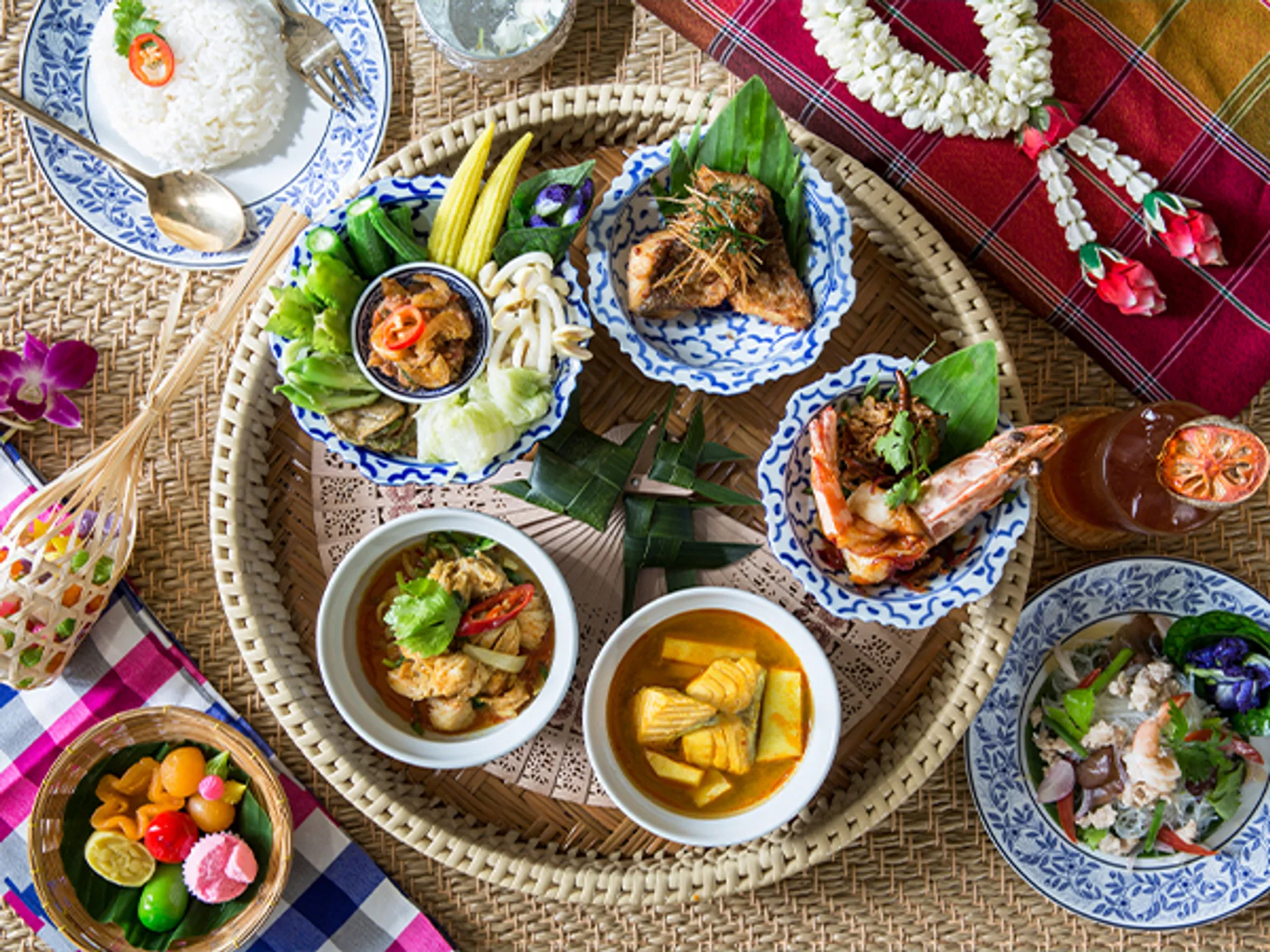


thailand visa for myanmarese
Select Visa Type
60 Days single Entry
Tourist e-Visa
single Entry
Validity 90 Days
Stay 60 Days
Get on
2 Sep 2025
60 Days multiple Entry
Tourist e-Visa
multiple Entry
Validity 180 Days
Stay 60 Days
Get on
2 Sep 2025
thailand Visa Requirements
Photo
Passport
Current Location Proof
Current Residency Status (Visa Permit)
Round trip flight tickets
Bank Statement
How thailand Visa Process Works
Step 1: Apply with Visa Centre Au
fill details & upload required documents via Visa Centre Au.
Step 2: Documents Verification
Your documents will Verified by our advisor. We will contact you if any further information required.
Step 3: Your Visa Gets Processed
eVisa Process
- We will submit your documents to the immigration department.
Embassy visa Process
- visa advisor will be assigned to your Application and assist with your Application and appointment booking.
- Attend visa appointment.
- Submit visa appointment to the immigration.
Step 4: Get Your Approved Visa on
You will receive an email notification of your visa approval and you can download from your Visa Centre Au account.
Reviews & Ratings
4.5/5
Based on 19 reviews
5
100%
4
0%
3
0%
2
0%
1
0%
On Time
Easy
Fast
Reliable
TrustWorthy
Cherrice Blizzard
australia
Immigration site had crashed
I had read on FB that the immigration site had crashed and there were continual issues when i wanted to do my 60 visa. I contacted Visa Centre Au and they processed my visa, no stress, no issues, simple process. I was even able to ring them to discuss my concerns. Thank you Visa Centre Au 🙏 😊

Amisha Dahal
australia
Got visa within a week
Got visa within a week. Very helpful. I will definitely recommend to others as well.

Prashansha Karki
australia
Fast and easy service
Fast and easy service, got a visa in couple of hours. Highly recommended!!

Soney S
australia
Reliable and great service
Very satisfied with the customer service provided recently as the visa was granted within a week. Highly recommended visa service centre if you looking for a professional, trustworthy, reliable, and responsive provider, who helps with your processing overall and clears all your queries with quick responses and great support👍Thankful to Mr Prem, you have been a great help.

Sujan Khatri
nepal
Great staff and easy process
Had a great experience with Visa Centre AU, the process was easier and the team was very responsive and giving me update on each part of the application. Love the service.
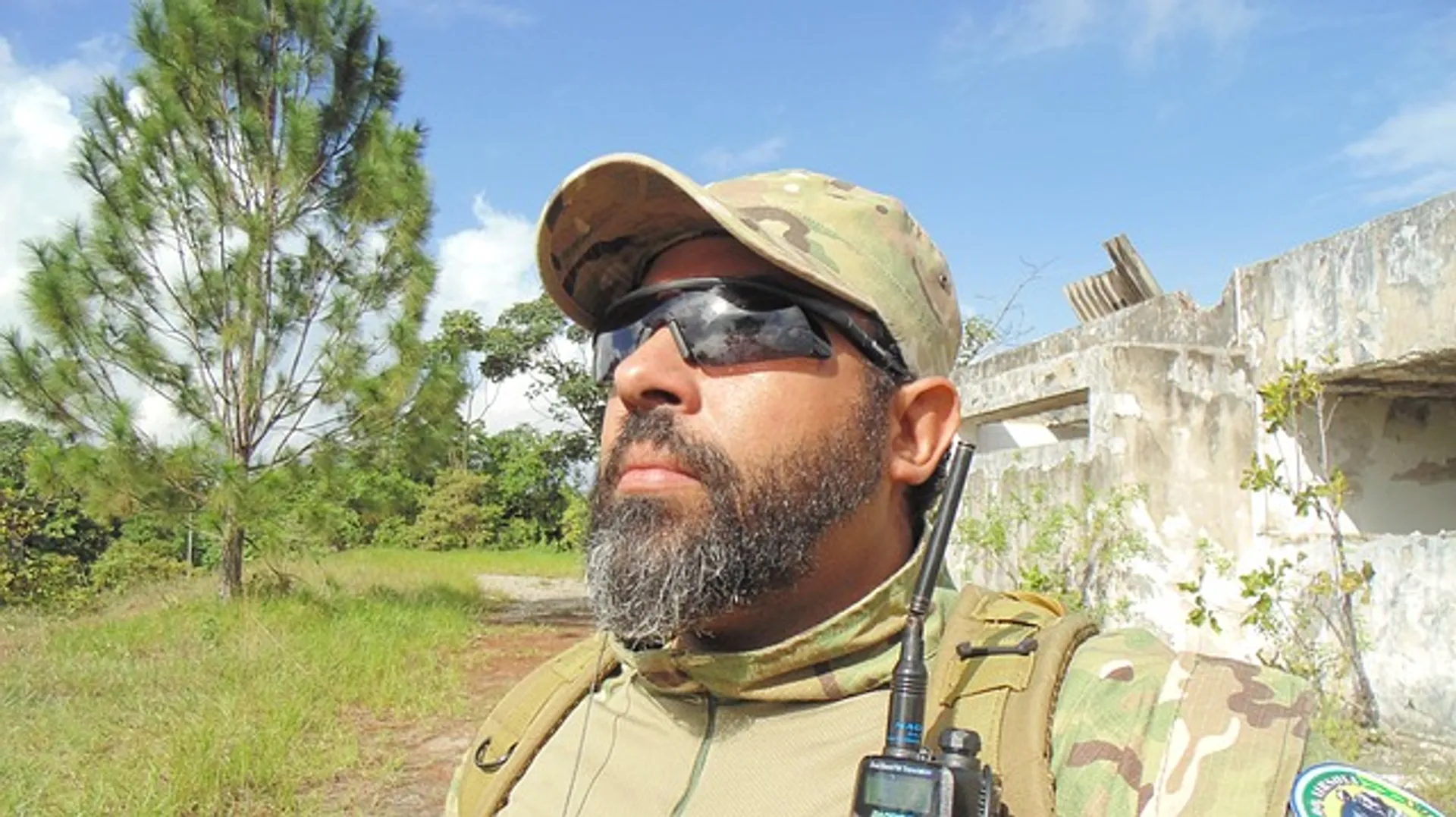
Sujan Paudel
australia
Thanks so much to Visa centre Au team…
Thanks so much to Visa centre Au team for all the help. Applying visa from them was really easy and they helped me every step of the way guiding me. My overall experience with the team was amazing and i highly recommend working with them.

Sunita Maharjan
nepal
Easily approachable and very reliable.
Easily approachable and very reliable.

Osama Ahmed Khan
pakistan
Very professional
Very professional Applied visa on 19th and received a day after on 21th Well satisfied 🥰🥰
Alina Chauhan
australia
Very helpful and professional team
Very helpful and professional team. Highly recommended.
Madhu Limbu
australia
Friendly and Convenient
Friendly support. All we had to do was provide the pics of our documents. Very convenient

Nishant Shrestha
nepal
Very Professional
Thank u so much visa centre AU for being so much helpful n understanding in every step of our visa process for thailand. I m very much pleased with ur effort and service. I am very much happy from ur service n Il be recommending my friends n family for choosing ur center. Thank u😍😊😊

Hawraa S
australia
I was in a tight situation but with…
I was in a tight situation but with visa centre he made my life easier Best team I've worked with Deserved the 5 stars

Roshani Thapa
australia
I want to thank visa centre Au for…
I want to thank visa centre Au for exceptional performance for solving visa issues . Greatly appreciate what you have done for me . I am grateful for ur valuable advice .most important is thank you for supporting us during crisis situations. Truly grateful for valuable service and emotional support.

kamal maharan
australia
Thank you for making my life easy
Thank you for making my life easy. As promised Bali visa in 2 days. Best in the business. Very much genuine, they are there to help people and make our life easy while traveling...really great service...once again thank you guys so so much.

Sunny Shrestha
australia
Visa granted in 4 days
I recently applied for a Japan visa through the Visa Centre, and I’m very pleased with the experience. The process was smooth, efficient, and professionally handled. My visa was granted without any issues. Highly recommend their service!

Manik Guragain
thailand
I booked a longtail boat to Phi Phi
I booked a longtail boat to Phi Phi Island through Visa Centre AU, and honestly, it was one of the best decisions I made on my trip. The entire experience—from booking to the actual tour—was smooth and hassle-free. The water was crystal clear, the views were straight out of a postcard, and the peaceful ride on the longtail boat made it feel like a private escape to paradise. Big thanks to the team for their quick response and friendly service. They made everything so easy. If you’re planning a trip to Thailand and want something truly special, I highly recommend booking through them. I’ll 100% be reaching out again for my next adventure. Don’t miss this—it’s worth every cent!
thailand Visa Rejection Reasons
Factors than can get your visa rejected
Expired Passport
Applying with a passport that has expired or expires within 6 months.
Insufficient Funds
Failing to demonstrate enough financial resources to support your stay.
Criminal Record
Having a criminal history that disqualifies you from obtaining a visa.
Previous Visa Violations
Having overstayed or violated the terms of a previous visa.
Frequently Asked Questions
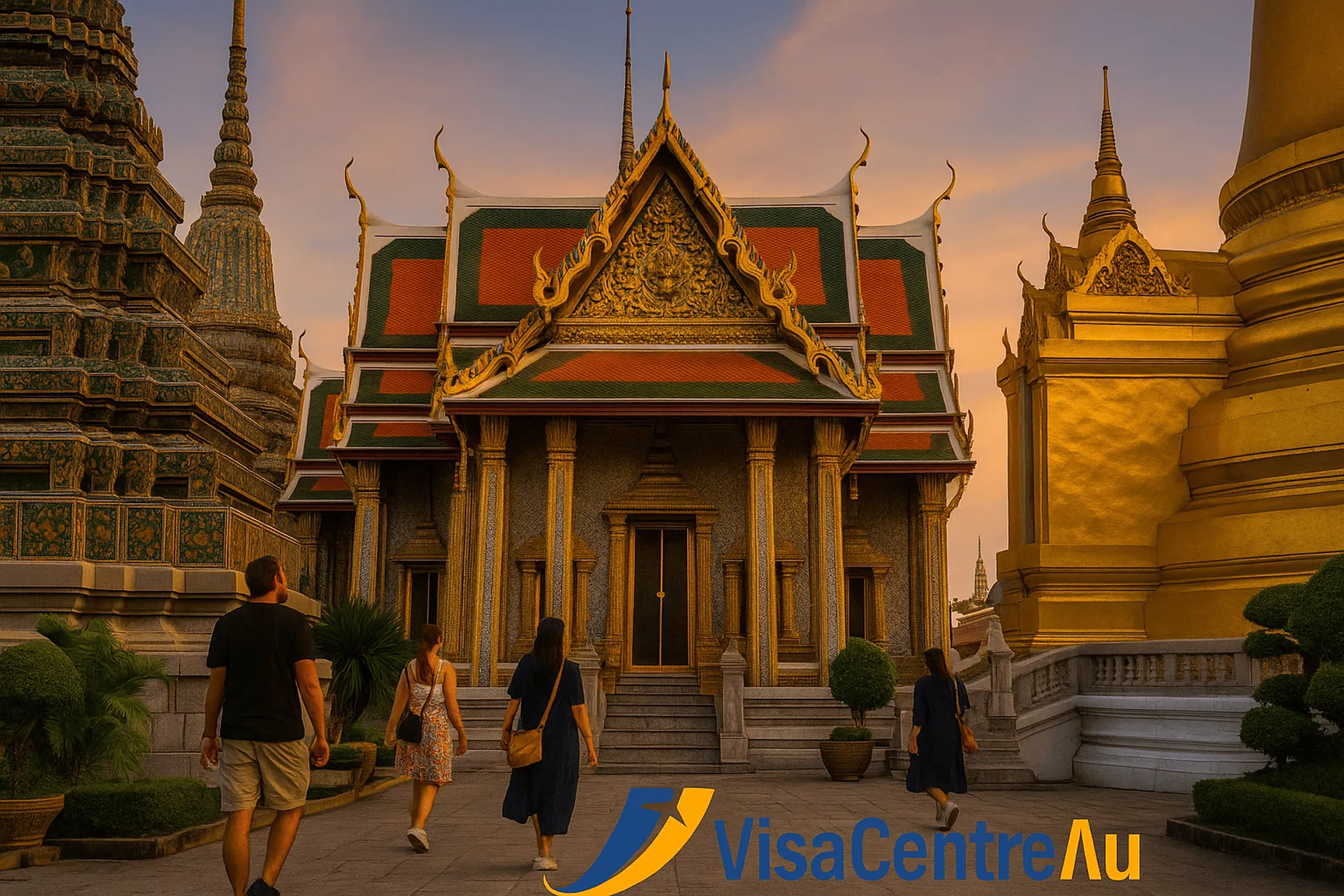
Thailand Travel Tips for Holidaymakers
Thailand – the “Land of Smiles” – is a welcoming, vibrant country famed for its cities, culture and beaches. In fact, it’s often cited as “one of the safest countries in southeast Asia for travelers”. Now that your Thai visa is approved, your adventure truly begins. Before you go, learn key tips on money, transport, culture, safety and immigration to make the most of your trip. Whether you secured a visa through Visa Centre Australia or another provider, this guide will help you navigate every part of your Thailand journey.
Money & Currency
- Thai Baht (THB): Thailand’s currency is the baht. You can exchange foreign currency (e.g. AUD) in banks or authorized changers in cities and tourist areas. ATMs are widely available in cities and towns, and most hotels/restaurants accept major credit cards. However, carry some cash for markets, taxis and street vendors.
- Safe Exchange: Only use official money changers or bank ATMs. Avoid on-the-street exchangers and always check notes for damage or counterfeits. Keep passports or ID handy when exchanging large amounts, as required by law.
- Card Skimming: Beware of ATM scams – skimming devices are reported. Use ATMs in bank lobbies or shopping malls, cover your PIN, and regularly check bank statements. Carry only the cards/cash you need each day, and separate backup funds (for example, keep one credit card and some cash in a secure, hidden pouch).
Transportation in Thailand
Thailand’s transport options are plentiful, especially in big cities. Bangkok has modern rail systems: the elevated BTS Skytrain and underground MRT subway. These run every few minutes and connect major areas – as one guide notes, the BTS is an “easy and efficient way to move between busy areas”. Using the Skytrain or subway lets you bypass Bangkok’s notorious traffic jams and quickly reach places like the Sukhumvit shopping district or Silom business area.
Taxis and Tuk-Tuks: Metered taxis (usually orange or green) are abundant and air-conditioned. Official taxis display a driver ID card on the dashboard. Always insist on using the meter. Tuk-tuks (3-wheelers) are iconic and fun for short rides, but note they are more expensive per km than taxis. Expect roughly 80–150 THB for a short tuk-tuk ride. If you do take a tuk-tuk, agree on a price first or be prepared to negotiate – drivers often charge tourists more. Ride-sharing apps (Grab is popular) work well: just double-check the car’s license plate and driver name before you hop in. For any unmetered taxi, tuk-tuk or motorcycle taxi, agree on the fare before starting the ride.
Other Local Travel: Cheap local buses run everywhere, though they can be slow and crowding. In provinces and smaller cities (like Chiang Mai), you’ll see songthaews – red pickup trucks with bench seats – which charge a flat fare for a route. Motorcycle taxis are plentiful for short distances (and cheaper than taxis) – they zip through traffic but ride with one person on the back, often with no helmet (wear one if you can). Finally, Thailand is well-connected by domestic flights (AirAsia, Nok Air, Thai VietJet etc.) for travel between cities, and overnight trains/buses offer budget travel to Chiang Mai, Hua Hin, Ayutthaya and beyond.
Language & Culture Etiquette
- Basic Thai: English is widely spoken in tourist areas, but learning a few Thai words goes a long way. Greet people with “Sawasdee” (hello/goodbye) and add “krub” (for men) or “ka” (for women) to show respect. For example, “thank you” is “khop khun krub/ka”. Thai people will appreciate even simple effort, and using polite particles helps smooth interactions.
- Wai Greeting: Thais commonly use the wai (palms together, slight bow) to greet and show respect. Return a wai if someone greets you. Children usually wai older people first, who may respond without bowing.
- Respect and Modesty: In Thailand, courtesy is prized. Never raise your voice or show anger in public – maintain a calm tone. Dress modestly when visiting temples and religious sites: cover shoulders and knees, and remove hats. You’ll notice shoe racks at temple or home entrances – always remove your shoes before entering. Inappropriate attire (e.g. sleeveless tops or short shorts at temples) can deny you entry.
- Do’s and Don’ts: Never touch anyone’s head or hair (the head is sacred) and avoid pointing your feet at people or sacred objects – feet are considered the lowest, “dirtiest” part of the body. Don’t put your feet up on tables or chairs, or wave to someone with your foot. Also, Thais have deep respect for the monarchy and Buddha – avoid any disrespect. For example, stand in silence if you happen to hear the national anthem in public, and never touch or climb on Buddha statues.
- Royal Family: Thais hold their royal family in extremely high regard. Never make negative or humorous comments about the King or royal symbols – such acts are against the law and very offensive.
Food & Drink
Thai cuisine is a major highlight of any trip. Street food stalls and markets serve delicious dishes: don’t miss pad Thai (noodles), gaeng keow wan (green curry), tom yum soup, or mango sticky rice for dessert. Thai food often uses chili, garlic, and fish sauce (fermented anchovies), so specify “mai phet” (not spicy) or “khong mai sai naam bpla” (no fish sauce) if you have preferences or allergies. Eat where locals queue – busy stalls mean turnover and fresher food.
- Safe Eating: Stick to freshly cooked foods and eat at places that look clean. Raw salads and undercooked meats carry higher risk. “Avoid tap water in Thailand; drink bottled or filtered water,” advises local health guides. Use bottled water for brushing your teeth, and be cautious with ice – only use ice if you know it’s from purified water. Fruit juices and shakes are refreshing, but ensure they use clean ice or drink from fruit where the peel is removed.
- Street Food: Trying street food is part of the fun, but make smart choices. Look for high-turnover stalls (people eating means the food is freshly made). Sanitization: Carry hand sanitizer and use it before eating. If you have a sensitive stomach, consider taking an anti-diarrheal medicine along. A mild tourist stomach can happen to anyone – just keep hydrated.
- Tipping: Tipping isn’t required, but is appreciated. In restaurants, leaving small change or rounding up the bill is a kind gesture. Hotel porters typically expect 20–50 THB per bag. For taxis, you can round up or add 10–20 THB to cover luggage help.
Safety & Health
Thailand is generally safe, but common-sense precautions go a long way.
- Petty Theft: Incidents of pickpocketing or bag-snatching do occur in crowded areas. Australian travel advice notes that “money and passports have been stolen from hostel rooms and from bags on public transport”. To reduce risk, never leave valuables unattended. Keep cameras, phones and wallets in a front bag. Consider a money belt or hidden pouch for passports and cash. If you store luggage under buses or trains, be cautious – use locks on suitcases and keep important items in your carry-on. Tourist police (dial 1155) are available if you need help.
- Scams: Be aware of common tourist scams. These include tuk-tuk drivers offering very cheap city tours that end at overpriced shops, gem sellers with “too-good-to-be-true” deals, or unofficial travel “agents” promising cheap tickets. If something feels off, trust your instincts. Use reputable tour operators, and always agree on prices in advance for tuk-tuks, taxis and tours.
- Emergencies: Note emergency numbers – dial 191 for police or 1155 for the Tourist Police. For medical emergencies, Bangkok’s number is 1724 (elsewhere, 1669 for ambulance). It’s wise to save these on your phone and know your hotel’s address (Thai hotels can provide an English-labeled address card).
- Health: Travel insurance is strongly recommended (with cover for health care and evacuation). U.S. and Australian authorities urge travelers to buy a comprehensive policy before departure. Vaccinations: Check that routine vaccines (MMR, tetanus, etc.) are up-to-date. Thailand has some risk of dengue (mosquito-borne fever), so use insect repellent and consider long sleeves/pants at dusk in jungle or rural areas. Thailand has modern clinics and hospitals in Bangkok/Phuket; always seek prompt medical help if injured or ill.
- Sun & Heat: Thailand’s sun can be intense. Wear sunscreen, a hat and stay hydrated. Heat exhaustion can happen to anyone, so drink plenty of safe fluids and take breaks in shade or air-conditioning.
Immigration Checks & Entry Requirements
When you arrive in Thailand, have your documents ready. An immigration officer will check your passport, visa approval and stamping forms. Tickets/Funds: You may be asked to show a return or onward flight ticket and proof of sufficient funds for your stay. Keep copies or photos of these documents handy (many airlines check before boarding).
- Entry Stamp: Make sure you receive your official entry stamp from the immigration officer. Do not get visas or stamps from unofficial agencies – altered or fake entry stamps are a serious offense that can lead to fines, imprisonment or deportation. The date on your stamp is your legal entry date, even if your visa sticker says otherwise.
- Visa Duration: Note the number of days allowed by your stamp. If you need to stay longer, apply for an extension at a local immigration office well before expiry. Overstaying is penalized harshly: even accidentally overstaying by a day can lead to fines, detention, and bans (1–10 years) on re-entry. Always double-check your permitted stay and plan your exit accordingly.
- Registration: If you plan to stay continuously in Thailand beyond 90 days, the law requires you to report your address to immigration every 90 days. Most hotels can help you with this if needed.
By following these tips, you can focus on enjoying Thailand’s wonders instead of worrying about logistics. In summary, keep your travel documents secure, respect local customs, and make smart choices on transport, money and health. With your visa in hand (for example, applied through Visa Centre Au), you are now ready for the journey. Have a fantastic trip – safe travels and sawasdee krub/ka!
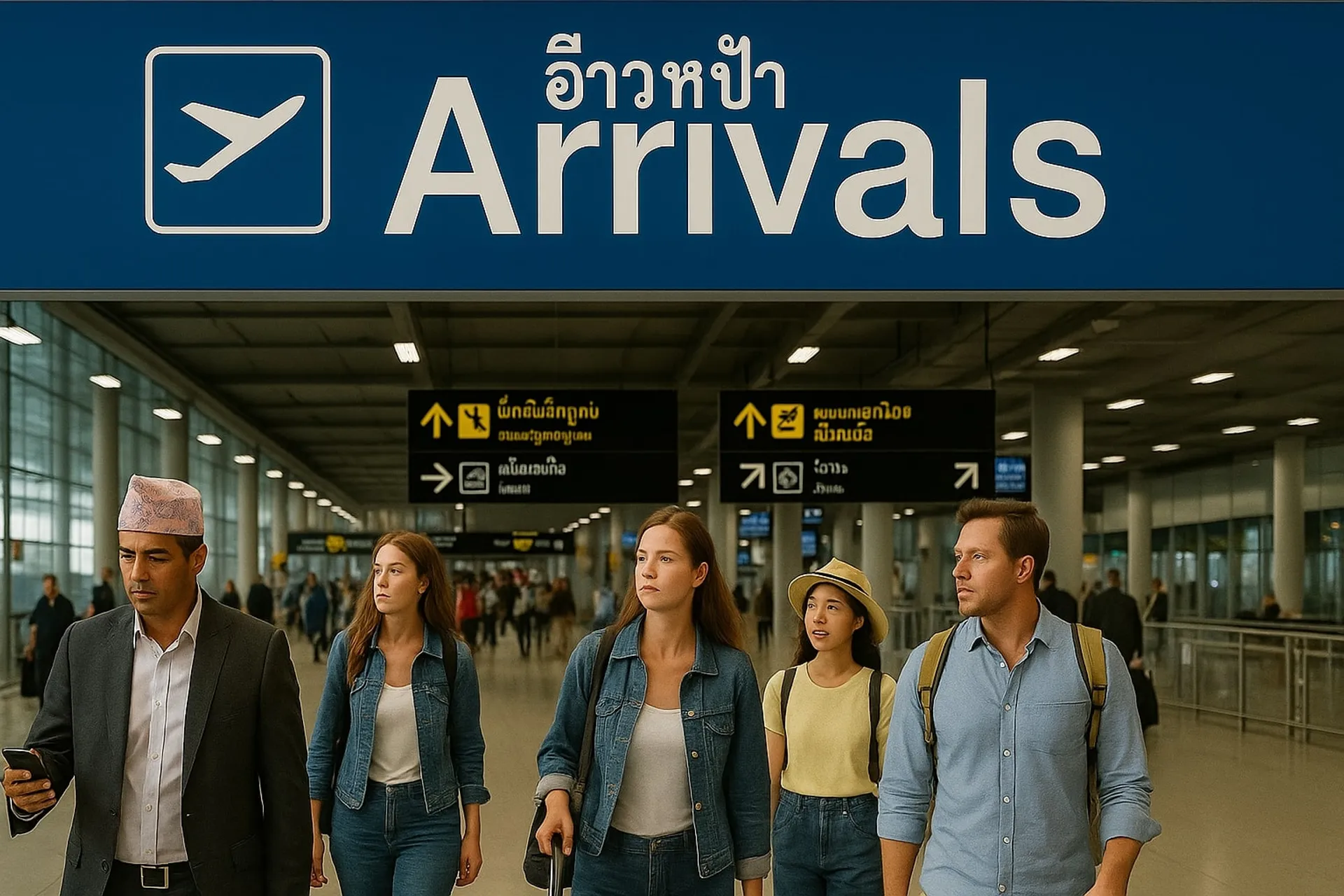
Thailand Digital Arrival Card (TDAC) & Visa Requirements: A Guide for Travelers to Thailand
How to Apply for the Thailand Digital Arrival Card
- Prepare your travel information: Have your passport ready along with your flight (or land border crossing) details and accommodation booking confirmation. You will need to enter your passport number, arrival date, and hotel address in Thailand.
- Visit the official TDAC website: Go to the Thailand Immigration Bureau’s official TDAC site (tdac.immigration.go.th) and select “Arrival Card.” Fill in your personal details – name, nationality, passport number, date of birth, gender, and contact information. Only the fields marked with a red asterisk are required.
- Enter your travel details: On the next page, provide information about your trip. This includes your mode of travel (e.g. airplane flight number or vehicle), the arrival date, and the address of your accommodation in Thailand. (Note: departure details are optional but you should have your onward travel plans ready, as you may be asked for proof of a return ticket upon arrival.)
- Complete the health declaration: The TDAC form will ask for a simple health/travel declaration. List any countries you have visited in the past two weeks. If you have been in a country with health warnings (e.g. yellow fever), you may need to show vaccination proof on arrival.
- Submit and save your TDAC confirmation: Once all sections are filled, submit the form. You will receive an email confirmation of your TDAC registration. Save this confirmation on your phone or print a copy. You will need to present it to Thai immigration officials when entering the country. (Each traveler must complete a TDAC, but the system allows adding family members under “Add Other Travelers” if you’re traveling together.)
Importance of the Digital Arrival Card (TDAC)
- Enhanced security and health screening: The TDAC’s health declaration helps Thai authorities track visitor travel history and manage disease risks before arrival, improving public health monitoring. It also lets immigration verify traveler identities in advance, strengthening border security.
- Faster immigration processing: With data pre-entered into the system, arriving passengers can clear immigration more quickly. There’s no more pen-and-paper forms to fill out on the plane or at the gate, reducing queues and errors. Thailand’s government notes that the TDAC will “streamline immigration procedures” as part of modernizing border control.
- Free and user-friendly: Completing the TDAC is completely free – there is no application fee. The system supports multiple languages and can be accessed on any internet-connected device (smartphone, tablet, or laptop). You can apply up to 72 hours before travel (e.g. 3 days in advance) to ensure the confirmation is ready.
- Convenient for group travel: If you’re traveling with family or friends, you can handle multiple TDACs together. The system lets you “Add Other Travelers” and submit their cards in one session.
Eligibility and Entry Requirements
- TDAC Eligibility: All non-Thai nationals entering Thailand (by air, land, or sea) must submit a Thailand Digital Arrival Card. The only exceptions are travelers who transit through Thailand without clearing immigration or those using a special border pass for nearby countries. In practice, this means every tourist and visa-holder needs the TDAC.
- Submission deadline: The TDAC must be submitted no more than 3 days (72 hours) before your arrival date. You can even complete it on the same day you travel, but applying a few days early is recommended to avoid any last-minute issues.
- Thailand Visa for Nepalese Citizens: Nepalese passport holders are not eligible for visa-free entry or visa-on-arrival in Thailand. (Only Nepali officials with official passports are exempt.) This means Nepalese travelers must obtain a Thai visa before departing Nepal. Typically, visitors apply for a Thai Tourist Visa (TR) good for a 60–90 day stay (single-entry or multiple-entry). The visa application process is separate from the TDAC, but you’ll need the visa in your passport to board a flight to Thailand.
- Visa Application Process: Thailand uses an online e-Visa system for visa applications. Residents of Australia (for example, including Nepalese nationals living in Australia) apply for a Thai tourist visa at the official portal (thaievisa.go.th) launched in March 2024. Similarly, from Kathmandu the Royal Thai Embassy now requires Nepali applicants to use the same e-Visa platform. In all cases, pay attention to the required documents listed for your visa application.
- Required Documents: When applying for a Thai tourist visa, you will typically need a valid passport (at least 6 months validity from your entry date), a completed visa application form, and one or two recent passport-size photos. You must also submit evidence of travel plans and support, such as a confirmed return flight itinerary and hotel booking or invitation letter. Proof of sufficient funds is usually required – for example, Thai embassies often ask for a bank statement showing a deposit (e.g. around THB 200,000 for a multiple-entry visa). Additional documents (like employment or income proof) may be requested. Be sure to check the specific requirements of the Thai embassy or consulate where you apply.
Thailand Visa Support Services
Navigating the TDAC and visa process can be complex, especially with new rules. Visa Centre AU offers comprehensive Thailand visa support services to help travelers meet all entry requirements. Our experts can assist Nepalese and other applicants by:
- Guiding your TDAC application: We help ensure your Thailand Digital Arrival Card is filled out correctly and submitted on time, avoiding delays at the airport.
- Preparing your visa application: We advise on the correct Thai visa type (typically a Tourist TR visa for short visits) and our expert team will apply your visa hassle free. You do not need to worry about your visa and you can plan your trip.
- Document verification: We review your visa application packet (passport, photos, itinerary, bank statements, etc.) to make sure nothing is missing or incorrect before submission.
- Latest entry rules: We keep updated on Thailand entry requirements (e.g. the TDAC rule for 2025) so you’ll have the current information for your trip.
By working with Visa Centre AU’s Thailand visa support team, Nepalese nationals and other travelers can be confident they have met Thailand’s 2025 entry requirements. For example, you’ll have peace of mind knowing both your visa and Digital Arrival Card are in order, so you can focus on enjoying Thailand’s sights and culture.
Sources: Official Thai immigration announcements and Royal Thai consulate and embassy guidelines.

Thailand Travel Tips for Holidaymakers
Thailand – the “Land of Smiles” – is a welcoming, vibrant country famed for its cities, culture and beaches. In fact, it’s often cited as “one of the safest countries in southeast Asia for travelers”. Now that your Thai visa is approved, your adventure truly begins. Before you go, learn key tips on money, transport, culture, safety and immigration to make the most of your trip. Whether you secured a visa through Visa Centre Australia or another provider, this guide will help you navigate every part of your Thailand journey.
Money & Currency
- Thai Baht (THB): Thailand’s currency is the baht. You can exchange foreign currency (e.g. AUD) in banks or authorized changers in cities and tourist areas. ATMs are widely available in cities and towns, and most hotels/restaurants accept major credit cards. However, carry some cash for markets, taxis and street vendors.
- Safe Exchange: Only use official money changers or bank ATMs. Avoid on-the-street exchangers and always check notes for damage or counterfeits. Keep passports or ID handy when exchanging large amounts, as required by law.
- Card Skimming: Beware of ATM scams – skimming devices are reported. Use ATMs in bank lobbies or shopping malls, cover your PIN, and regularly check bank statements. Carry only the cards/cash you need each day, and separate backup funds (for example, keep one credit card and some cash in a secure, hidden pouch).
Transportation in Thailand
Thailand’s transport options are plentiful, especially in big cities. Bangkok has modern rail systems: the elevated BTS Skytrain and underground MRT subway. These run every few minutes and connect major areas – as one guide notes, the BTS is an “easy and efficient way to move between busy areas”. Using the Skytrain or subway lets you bypass Bangkok’s notorious traffic jams and quickly reach places like the Sukhumvit shopping district or Silom business area.
Taxis and Tuk-Tuks: Metered taxis (usually orange or green) are abundant and air-conditioned. Official taxis display a driver ID card on the dashboard. Always insist on using the meter. Tuk-tuks (3-wheelers) are iconic and fun for short rides, but note they are more expensive per km than taxis. Expect roughly 80–150 THB for a short tuk-tuk ride. If you do take a tuk-tuk, agree on a price first or be prepared to negotiate – drivers often charge tourists more. Ride-sharing apps (Grab is popular) work well: just double-check the car’s license plate and driver name before you hop in. For any unmetered taxi, tuk-tuk or motorcycle taxi, agree on the fare before starting the ride.
Other Local Travel: Cheap local buses run everywhere, though they can be slow and crowding. In provinces and smaller cities (like Chiang Mai), you’ll see songthaews – red pickup trucks with bench seats – which charge a flat fare for a route. Motorcycle taxis are plentiful for short distances (and cheaper than taxis) – they zip through traffic but ride with one person on the back, often with no helmet (wear one if you can). Finally, Thailand is well-connected by domestic flights (AirAsia, Nok Air, Thai VietJet etc.) for travel between cities, and overnight trains/buses offer budget travel to Chiang Mai, Hua Hin, Ayutthaya and beyond.
Language & Culture Etiquette
- Basic Thai: English is widely spoken in tourist areas, but learning a few Thai words goes a long way. Greet people with “Sawasdee” (hello/goodbye) and add “krub” (for men) or “ka” (for women) to show respect. For example, “thank you” is “khop khun krub/ka”. Thai people will appreciate even simple effort, and using polite particles helps smooth interactions.
- Wai Greeting: Thais commonly use the wai (palms together, slight bow) to greet and show respect. Return a wai if someone greets you. Children usually wai older people first, who may respond without bowing.
- Respect and Modesty: In Thailand, courtesy is prized. Never raise your voice or show anger in public – maintain a calm tone. Dress modestly when visiting temples and religious sites: cover shoulders and knees, and remove hats. You’ll notice shoe racks at temple or home entrances – always remove your shoes before entering. Inappropriate attire (e.g. sleeveless tops or short shorts at temples) can deny you entry.
- Do’s and Don’ts: Never touch anyone’s head or hair (the head is sacred) and avoid pointing your feet at people or sacred objects – feet are considered the lowest, “dirtiest” part of the body. Don’t put your feet up on tables or chairs, or wave to someone with your foot. Also, Thais have deep respect for the monarchy and Buddha – avoid any disrespect. For example, stand in silence if you happen to hear the national anthem in public, and never touch or climb on Buddha statues.
- Royal Family: Thais hold their royal family in extremely high regard. Never make negative or humorous comments about the King or royal symbols – such acts are against the law and very offensive.
Food & Drink
Thai cuisine is a major highlight of any trip. Street food stalls and markets serve delicious dishes: don’t miss pad Thai (noodles), gaeng keow wan (green curry), tom yum soup, or mango sticky rice for dessert. Thai food often uses chili, garlic, and fish sauce (fermented anchovies), so specify “mai phet” (not spicy) or “khong mai sai naam bpla” (no fish sauce) if you have preferences or allergies. Eat where locals queue – busy stalls mean turnover and fresher food.
- Safe Eating: Stick to freshly cooked foods and eat at places that look clean. Raw salads and undercooked meats carry higher risk. “Avoid tap water in Thailand; drink bottled or filtered water,” advises local health guides. Use bottled water for brushing your teeth, and be cautious with ice – only use ice if you know it’s from purified water. Fruit juices and shakes are refreshing, but ensure they use clean ice or drink from fruit where the peel is removed.
- Street Food: Trying street food is part of the fun, but make smart choices. Look for high-turnover stalls (people eating means the food is freshly made). Sanitization: Carry hand sanitizer and use it before eating. If you have a sensitive stomach, consider taking an anti-diarrheal medicine along. A mild tourist stomach can happen to anyone – just keep hydrated.
- Tipping: Tipping isn’t required, but is appreciated. In restaurants, leaving small change or rounding up the bill is a kind gesture. Hotel porters typically expect 20–50 THB per bag. For taxis, you can round up or add 10–20 THB to cover luggage help.
Safety & Health
Thailand is generally safe, but common-sense precautions go a long way.
- Petty Theft: Incidents of pickpocketing or bag-snatching do occur in crowded areas. Australian travel advice notes that “money and passports have been stolen from hostel rooms and from bags on public transport”. To reduce risk, never leave valuables unattended. Keep cameras, phones and wallets in a front bag. Consider a money belt or hidden pouch for passports and cash. If you store luggage under buses or trains, be cautious – use locks on suitcases and keep important items in your carry-on. Tourist police (dial 1155) are available if you need help.
- Scams: Be aware of common tourist scams. These include tuk-tuk drivers offering very cheap city tours that end at overpriced shops, gem sellers with “too-good-to-be-true” deals, or unofficial travel “agents” promising cheap tickets. If something feels off, trust your instincts. Use reputable tour operators, and always agree on prices in advance for tuk-tuks, taxis and tours.
- Emergencies: Note emergency numbers – dial 191 for police or 1155 for the Tourist Police. For medical emergencies, Bangkok’s number is 1724 (elsewhere, 1669 for ambulance). It’s wise to save these on your phone and know your hotel’s address (Thai hotels can provide an English-labeled address card).
- Health: Travel insurance is strongly recommended (with cover for health care and evacuation). U.S. and Australian authorities urge travelers to buy a comprehensive policy before departure. Vaccinations: Check that routine vaccines (MMR, tetanus, etc.) are up-to-date. Thailand has some risk of dengue (mosquito-borne fever), so use insect repellent and consider long sleeves/pants at dusk in jungle or rural areas. Thailand has modern clinics and hospitals in Bangkok/Phuket; always seek prompt medical help if injured or ill.
- Sun & Heat: Thailand’s sun can be intense. Wear sunscreen, a hat and stay hydrated. Heat exhaustion can happen to anyone, so drink plenty of safe fluids and take breaks in shade or air-conditioning.
Immigration Checks & Entry Requirements
When you arrive in Thailand, have your documents ready. An immigration officer will check your passport, visa approval and stamping forms. Tickets/Funds: You may be asked to show a return or onward flight ticket and proof of sufficient funds for your stay. Keep copies or photos of these documents handy (many airlines check before boarding).
- Entry Stamp: Make sure you receive your official entry stamp from the immigration officer. Do not get visas or stamps from unofficial agencies – altered or fake entry stamps are a serious offense that can lead to fines, imprisonment or deportation. The date on your stamp is your legal entry date, even if your visa sticker says otherwise.
- Visa Duration: Note the number of days allowed by your stamp. If you need to stay longer, apply for an extension at a local immigration office well before expiry. Overstaying is penalized harshly: even accidentally overstaying by a day can lead to fines, detention, and bans (1–10 years) on re-entry. Always double-check your permitted stay and plan your exit accordingly.
- Registration: If you plan to stay continuously in Thailand beyond 90 days, the law requires you to report your address to immigration every 90 days. Most hotels can help you with this if needed.
By following these tips, you can focus on enjoying Thailand’s wonders instead of worrying about logistics. In summary, keep your travel documents secure, respect local customs, and make smart choices on transport, money and health. With your visa in hand (for example, applied through Visa Centre Au), you are now ready for the journey. Have a fantastic trip – safe travels and sawasdee krub/ka!

Thailand Digital Arrival Card (TDAC) & Visa Requirements: A Guide for Travelers to Thailand
How to Apply for the Thailand Digital Arrival Card
- Prepare your travel information: Have your passport ready along with your flight (or land border crossing) details and accommodation booking confirmation. You will need to enter your passport number, arrival date, and hotel address in Thailand.
- Visit the official TDAC website: Go to the Thailand Immigration Bureau’s official TDAC site (tdac.immigration.go.th) and select “Arrival Card.” Fill in your personal details – name, nationality, passport number, date of birth, gender, and contact information. Only the fields marked with a red asterisk are required.
- Enter your travel details: On the next page, provide information about your trip. This includes your mode of travel (e.g. airplane flight number or vehicle), the arrival date, and the address of your accommodation in Thailand. (Note: departure details are optional but you should have your onward travel plans ready, as you may be asked for proof of a return ticket upon arrival.)
- Complete the health declaration: The TDAC form will ask for a simple health/travel declaration. List any countries you have visited in the past two weeks. If you have been in a country with health warnings (e.g. yellow fever), you may need to show vaccination proof on arrival.
- Submit and save your TDAC confirmation: Once all sections are filled, submit the form. You will receive an email confirmation of your TDAC registration. Save this confirmation on your phone or print a copy. You will need to present it to Thai immigration officials when entering the country. (Each traveler must complete a TDAC, but the system allows adding family members under “Add Other Travelers” if you’re traveling together.)
Importance of the Digital Arrival Card (TDAC)
- Enhanced security and health screening: The TDAC’s health declaration helps Thai authorities track visitor travel history and manage disease risks before arrival, improving public health monitoring. It also lets immigration verify traveler identities in advance, strengthening border security.
- Faster immigration processing: With data pre-entered into the system, arriving passengers can clear immigration more quickly. There’s no more pen-and-paper forms to fill out on the plane or at the gate, reducing queues and errors. Thailand’s government notes that the TDAC will “streamline immigration procedures” as part of modernizing border control.
- Free and user-friendly: Completing the TDAC is completely free – there is no application fee. The system supports multiple languages and can be accessed on any internet-connected device (smartphone, tablet, or laptop). You can apply up to 72 hours before travel (e.g. 3 days in advance) to ensure the confirmation is ready.
- Convenient for group travel: If you’re traveling with family or friends, you can handle multiple TDACs together. The system lets you “Add Other Travelers” and submit their cards in one session.
Eligibility and Entry Requirements
- TDAC Eligibility: All non-Thai nationals entering Thailand (by air, land, or sea) must submit a Thailand Digital Arrival Card. The only exceptions are travelers who transit through Thailand without clearing immigration or those using a special border pass for nearby countries. In practice, this means every tourist and visa-holder needs the TDAC.
- Submission deadline: The TDAC must be submitted no more than 3 days (72 hours) before your arrival date. You can even complete it on the same day you travel, but applying a few days early is recommended to avoid any last-minute issues.
- Thailand Visa for Nepalese Citizens: Nepalese passport holders are not eligible for visa-free entry or visa-on-arrival in Thailand. (Only Nepali officials with official passports are exempt.) This means Nepalese travelers must obtain a Thai visa before departing Nepal. Typically, visitors apply for a Thai Tourist Visa (TR) good for a 60–90 day stay (single-entry or multiple-entry). The visa application process is separate from the TDAC, but you’ll need the visa in your passport to board a flight to Thailand.
- Visa Application Process: Thailand uses an online e-Visa system for visa applications. Residents of Australia (for example, including Nepalese nationals living in Australia) apply for a Thai tourist visa at the official portal (thaievisa.go.th) launched in March 2024. Similarly, from Kathmandu the Royal Thai Embassy now requires Nepali applicants to use the same e-Visa platform. In all cases, pay attention to the required documents listed for your visa application.
- Required Documents: When applying for a Thai tourist visa, you will typically need a valid passport (at least 6 months validity from your entry date), a completed visa application form, and one or two recent passport-size photos. You must also submit evidence of travel plans and support, such as a confirmed return flight itinerary and hotel booking or invitation letter. Proof of sufficient funds is usually required – for example, Thai embassies often ask for a bank statement showing a deposit (e.g. around THB 200,000 for a multiple-entry visa). Additional documents (like employment or income proof) may be requested. Be sure to check the specific requirements of the Thai embassy or consulate where you apply.
Thailand Visa Support Services
Navigating the TDAC and visa process can be complex, especially with new rules. Visa Centre AU offers comprehensive Thailand visa support services to help travelers meet all entry requirements. Our experts can assist Nepalese and other applicants by:
- Guiding your TDAC application: We help ensure your Thailand Digital Arrival Card is filled out correctly and submitted on time, avoiding delays at the airport.
- Preparing your visa application: We advise on the correct Thai visa type (typically a Tourist TR visa for short visits) and our expert team will apply your visa hassle free. You do not need to worry about your visa and you can plan your trip.
- Document verification: We review your visa application packet (passport, photos, itinerary, bank statements, etc.) to make sure nothing is missing or incorrect before submission.
- Latest entry rules: We keep updated on Thailand entry requirements (e.g. the TDAC rule for 2025) so you’ll have the current information for your trip.
By working with Visa Centre AU’s Thailand visa support team, Nepalese nationals and other travelers can be confident they have met Thailand’s 2025 entry requirements. For example, you’ll have peace of mind knowing both your visa and Digital Arrival Card are in order, so you can focus on enjoying Thailand’s sights and culture.
Sources: Official Thai immigration announcements and Royal Thai consulate and embassy guidelines.

Thailand Visa Requirements: A Guide for 2025 Travelers
Thailand, known for its vibrant culture, stunning beaches, and incredible cuisine, attracts millions of tourists each year. However, depending on your nationality, you may need to secure a visa before entering the Land of Smiles. This blog outlines the nationalities that require a visa to visit Thailand, ensuring your travel plans are seamless and hassle-free.
Why Do You Need a Visa for Thailand?
Thailand’s visa policy is designed to regulate the entry of visitors, depending on their purpose of travel and nationality. A visa ensures compliance with the country’s immigration laws and allows tourists to explore this enchanting destination legally. If your country is listed below, obtaining a visa is a mandatory step in your travel preparations.
List of Countries Requiring a Visa to Visit Thailand
Here’s the detailed alphabetical list of countries whose citizens must apply for a visa to travel to Thailand:
A Afghanistan, Algeria, Angola, Antigua and Barbuda, Azerbaijan.
B Bahamas, Bangladesh, Barbados, Belize, Benin, Bosnia and Herzegovina, Botswana, Burkina Faso, Burundi.
C Cameroon, Cape Verde Islands, Central African Republic, Chad, Comoro Islands, Congo (Democratic Republic), Congo (Republic), Côte d'Ivoire.
D Djibouti.
E Egypt, Equatorial Guinea, Eritrea, eSwatini.
G Gabon, Ghana, Grenada, Guinea, Guinea-Bissau, Guyana.
H Haiti, Honduras.
I Iran, Iraq.
K Kenya, Kiribati.
L Lebanon, Lesotho, Liberia, Libya.
M Madagascar, Malawi, Mali, Marshall Islands, Mauritania, Micronesia, Moldova, Montenegro, Mozambique, Myanmar.
N Nepal, Nicaragua, Niger, Nigeria, North Korea, North Macedonia.
P Pakistan, Palau Islands, Palestinian Territory.
R Rwanda.
S Samoa, Sao Tome and Principe, Senegal, Sierra Leone, Solomon Islands, Somalia, South Sudan, St. Kitts and Nevis, St. Lucia, St. Vincent and the Grenadines, Sudan, Suriname, Syria.
T Tajikistan, Tanzania, The Gambia, Timor-Leste, Togo, Turkmenistan, Tuvalu.
U Uganda.
V Vatican City.
Y Yemen.
Z Zambia, Zimbabwe.
Tips for a Smooth Visa Application Process
- Begin Early: Start your application process well ahead of your travel dates to avoid delays.
- Check the Visa Type: Different visa types are available depending on your purpose of travel (tourism, business, etc.).
- Gather Necessary Documents: Ensure your passport, photographs, travel itinerary, and other documents are ready for submission.
- Consult Thai Authorities: Contact the nearest Thai consulate or embassy for accurate and updated visa information or check Visa Centre Au website.
Why Visit Thailand?
Thailand is a blend of tradition and modernity, offering visitors everything from serene temples and bustling markets to idyllic islands and world-class cuisine. Whether you’re exploring the cultural richness of Bangkok, relaxing on the beaches of Phuket, or enjoying the lush greenery of Chiang Mai, Thailand promises an unforgettable travel experience.
Final Thoughts
If your country is listed above, securing a visa is a crucial part of your travel planning. With proper preparation, the application process can be smooth, ensuring you’re ready to embark on a memorable journey to Thailand.